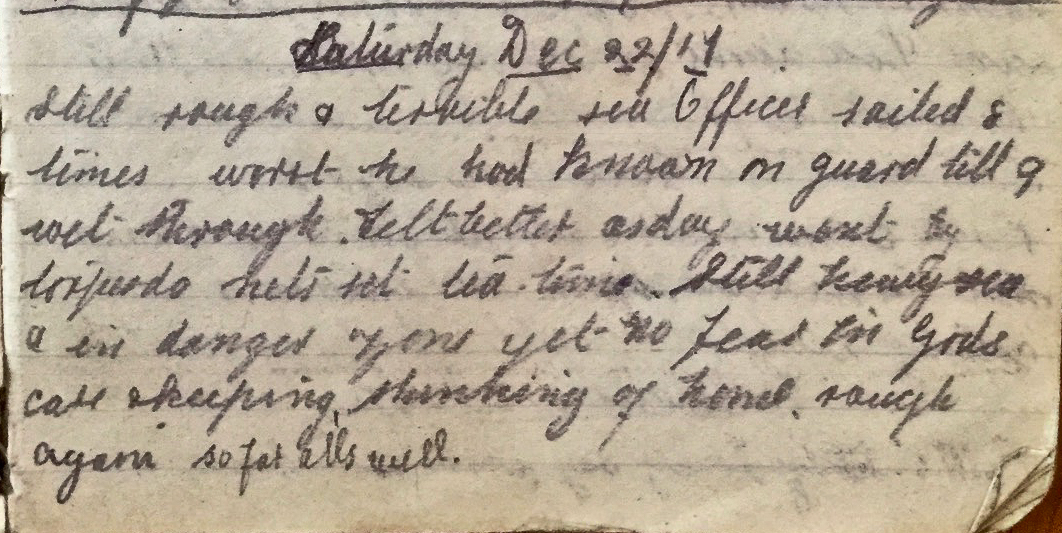Saturday, Dec 22nd, 1917
Still rough and terrible sea. Officer sailed eight times – worst he had known. On guard till 9 – wet through. Felt better as day went by. Torpedo nets set tea-time. Still heavy sea and in danger zone. Yet no fear in God’s care and keeping, thinking of home. Rough again. So far, all’s well.
Torpedo Nets
Torpedo nets were made of steel and suspended from long wooden booms attached to the ship. Their deployment would cause a torpedo to detonate at a distance from ship thereby protecting it from significant damage. Varieties had been in use since 1880s.

Interestingly, articles about torpedo nets show that their use was in decline from the early days of the First World War. They became ineffective as torpedoes became faster and new tactics were deployed (eg firing several torpedoes at the same target, thereby damaging the net then penetrating it).²
The British Navy stopped fitting them to new war ships in 1916, around the time they requisitioned the Kashmir as a troop ship. However, at the end of 1917, while Frank was on board the HMS Kashmir torpedo nets were clearly fitted and still being deployed. Apparently merchant ships continued to use them in the Second World War. Therefore, could it be that P&O had them fitted on the SS Kashmir when it was first built after the outbreak of the First World War?
Over time, torpedo nets on ships were superseded by new anti-torpedo measures such as the ‘bulge’ and the ‘belt’ which in turn became obsolete. However heavy duty anti-torpedo nets continued to be used at static anchorages throughout the Second World War and by the Royal Navy into the 1950s.¹
References
* photograph from Clyde Ships website. Image may be subject to copyright.
¹ ‘Anti-torpedo nets‘ by Philip Russell
2 ‘Torpedo Net‘ on Wikipedia


